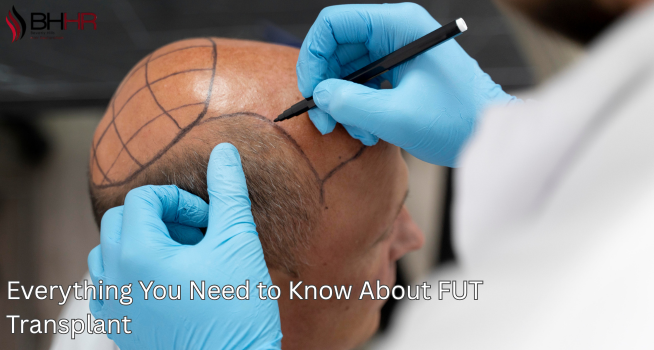When it comes to hair restoration techniques, FUT transplant remains one of the most widely practiced methods across the globe. For many individuals struggling with thinning hair or baldness, this procedure provides an effective and long-lasting solution. Unlike temporary fixes such as topical products or hair fibers, FUT is a surgical method that offers natural-looking growth. In this article, we’ll explore the process, benefits, risks, and recovery details so you can understand whether this option is right for you.
What is FUT Transplant?
FUT, also known as Follicular Unit Transplantation, involves removing a strip of scalp from the donor area, usually the back of the head. Skilled surgeons then separate this strip into smaller follicular units under a microscope. These grafts are implanted into the recipient area where hair loss is noticeable. Over time, the transplanted hair grows naturally, blending seamlessly with existing strands. This technique is distinct from FUE (Follicular Unit Extraction), where individual follicles are harvested one by one. While both methods have their place, FUT is often preferred when patients require a larger number of grafts in a single session.
Who is an Ideal Candidate?
Not everyone experiencing hair loss is automatically suited for this treatment. An ideal candidate should:
-
Have sufficient donor hair at the back or sides of the scalp
-
Experience pattern baldness or thinning primarily at the crown or hairline
-
Be in good overall health to undergo a minor surgical procedure
-
Hold realistic expectations about results
A consultation with a qualified surgeon is essential to assess suitability.
Benefits of FUT
One of the strongest advantages of FUT transplant is the ability to cover larger areas of baldness in a single session. Because grafts are harvested as a strip, the survival rate of follicles tends to be high. Patients often achieve denser results with fewer procedures compared to some alternative methods.
Other key benefits include:
-
Natural Appearance – Results look like natural hair growth once the transplanted follicles settle.
-
Cost Efficiency – Generally, FUT sessions can be more economical for larger coverage compared to other techniques.
-
Permanent Results – Since donor hair comes from areas resistant to balding, the transplanted strands typically last a lifetime.
The Procedure Step by Step
-
Preparation – The scalp is cleaned and numbed with local anesthesia.
-
Donor Strip Removal – A narrow strip of tissue is taken from the donor region.
-
Dissection of Follicular Units – Technicians divide the strip into tiny follicular units under microscopes.
-
Recipient Site Creation – Small incisions are made in the thinning or bald areas.
-
Graft Implantation – The harvested follicles are placed carefully into the prepared sites.
-
Closure – The donor area is sutured, leaving a fine linear scar that can be concealed with surrounding hair.
Recovery and Aftercare
Most patients can return home the same day after the surgery. Stitches in the donor area are typically removed after 7–10 days. Some redness, swelling, or mild discomfort is normal during the first week.
Key aftercare tips include:
-
Avoid strenuous activities for at least 10–14 days.
-
Follow prescribed medications to manage pain or prevent infection.
-
Keep the scalp clean and follow washing instructions provided by the surgeon.
-
Avoid scratching or touching grafted areas while they heal.
Hair shedding usually occurs within the first month—a natural part of the cycle. Visible growth typically begins around three to four months, with full results noticeable within 12–18 months.
Possible Risks and Side Effects
While FUT transplant is considered safe, it is still a surgical procedure and carries potential risks:
-
Linear scarring at the donor site
-
Temporary numbness in the scalp
-
Risk of infection if aftercare is neglected
-
Uneven hair growth if grafts do not take properly
Choosing an experienced surgeon significantly reduces these risks.
FUT vs. FUE: How to Decide
When comparing FUT and FUE, the choice often depends on the patient’s goals and preferences. FUT may be better for those requiring maximum coverage in one session, while FUE is ideal for those seeking minimal scarring and shorter recovery times. Ultimately, a personalized consultation helps determine which method aligns with your hair restoration needs.
Final Thoughts
Hair loss can be emotionally challenging, but medical advancements have provided lasting solutions. FUT transplant continues to be a trusted technique for achieving dense, natural results. By understanding the procedure, recovery, and potential risks, you can make an informed decision about your journey toward restored confidence and appearance.




